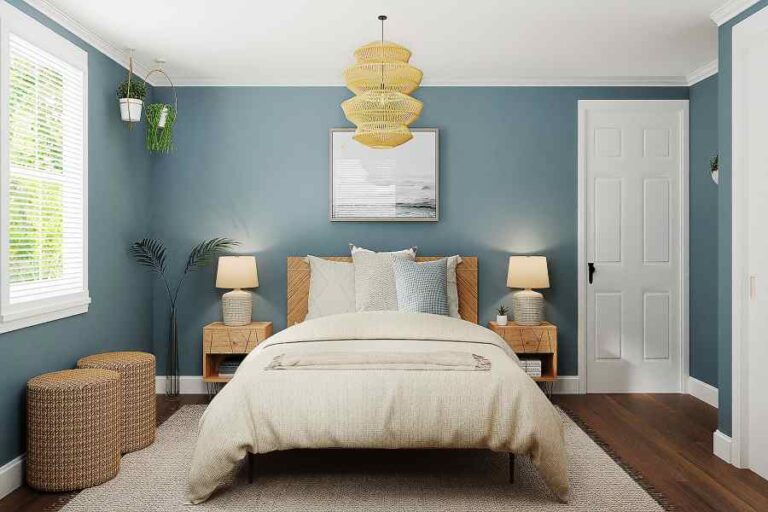Elevating your smart home experience goes beyond gadgets; it’s about crafting the perfect atmosphere for every nook and cranny. Amidst the array of futuristic innovations, the significance of tailored lighting often remains overlooked. Yet, the very element sets the mood for relaxation, productivity, and everything in between in each room. Welcome to our blog post, where we unlock a treasure trove of invaluable tips and tricks. Discover the art of illuminating your living spaces intelligently and efficiently as we navigate the labyrinth of smart lighting. From the soothing glow in the bedroom to the vibrant focus in the study, learn how to curate the ideal aura for every corner of your abode. Join us on this illuminating journey and master the science of the right light.
How To Light Up Every Room
Living Room
In living rooms, it is significant to have adaptable lighting that can be used for various activities, such as entertaining, watching movies, and relaxing. Track lighting is a good option because it can provide different types of lighting, including ambient, task, and accent lighting. The lights can be moved, swiveled, rotated, and aimed to change the lighting scheme at any time. Adjustable beams also allow for different patterns or washes of light without having to change the bulbs. For living rooms with a TV, it is recommended to use lights that do not cause shadows or glare to create a movie theater feel. Pendants are a great option for lighting when the TV is off, while dimmable sconces, track lights, and molding with uplights can provide safe movement without distracting from the action when the TV is on. A suitable amount of lumens for living rooms is usually around 10-20 per square foot.
Dining Room
In your dining room, where conversations flow, and social connections thrive, it’s crucial to curate the right lighting atmosphere. A dim and shadowy setting won’t do; instead, focus on achieving well-balanced overall lighting. Ceiling fixtures such as flush-mount and recessed can lights prove highly effective in dining rooms, ensuring an evenly lit space.
For those seeking a more striking lighting choice, a chandelier offers both decorative flair and functional illumination. When installing a chandelier, keep in mind that it should hang around 33 inches above the table if your dining room has 8-foot ceilings. Add 3 inches to this measurement for every additional foot above 8 feet. To ensure ample brightness, aim for approximately 30-40 lumens per square foot with your chosen lightbulbs. This meticulous attention to lighting details can transform your dining area into a welcoming and well-lit haven, perfect for memorable gatherings.
Kitchen
In the realm of kitchens, particularly those of a larger scale, achieving proper illumination necessitates a multifaceted lighting approach. To create a well-lit environment, start with ambient lighting, which uniformly blankets the area. Opt for a ceiling fixture or recessed can lights for this purpose, ensuring even light distribution across the space. Complement this with targeted task lighting by situating light sources directly above work areas.
For islands, LED pendant lighting is a favored lighting option, hanging at a height of approximately 35-40 inches above the surface to provide functional yet stylish illumination. Likewise, consider the practicality of undercabinet lights in food preparation zones, enhancing visibility and functionality.
Hallway
Hallways, often serving as transitional spaces, offer a simpler approach to lighting compared to other areas. For these corridors, the lighting requirements are less intricate. Opt for a discreet flush-mount ceiling fixture to provide inconspicuous illumination, or consider installing a few sconces along the wall for a subtle, indirect lighting effect.
The intensity of light needed in hallways is typically lower than in other spaces. A guideline of 5-10 lumens per square foot generally provides adequate. This lighting level ensures a comfortable and unobtrusive ambiance as you traverse these connecting pathways. While hallways may not demand intricate lighting solutions, a well-considered choice provides seamless transitions and a cohesive lighting theme throughout your smart home.
Conclusion
In the realm of smart homes, the significance of choosing the right lighting for each room cannot be overstated. From fostering conversations in dining rooms with well-placed chandeliers to maximizing productivity in kitchens through a layered approach and crafting seamless transitions in hallways with subtle fixtures, lighting transforms spaces. Balancing ambient, task, and decorative lighting ensures every corner is functional and inviting. So, as you embark on your smart home journey, remember that the right light not only illuminates your spaces but sets the stage for comfort, style, and functionality throughout your abode.
